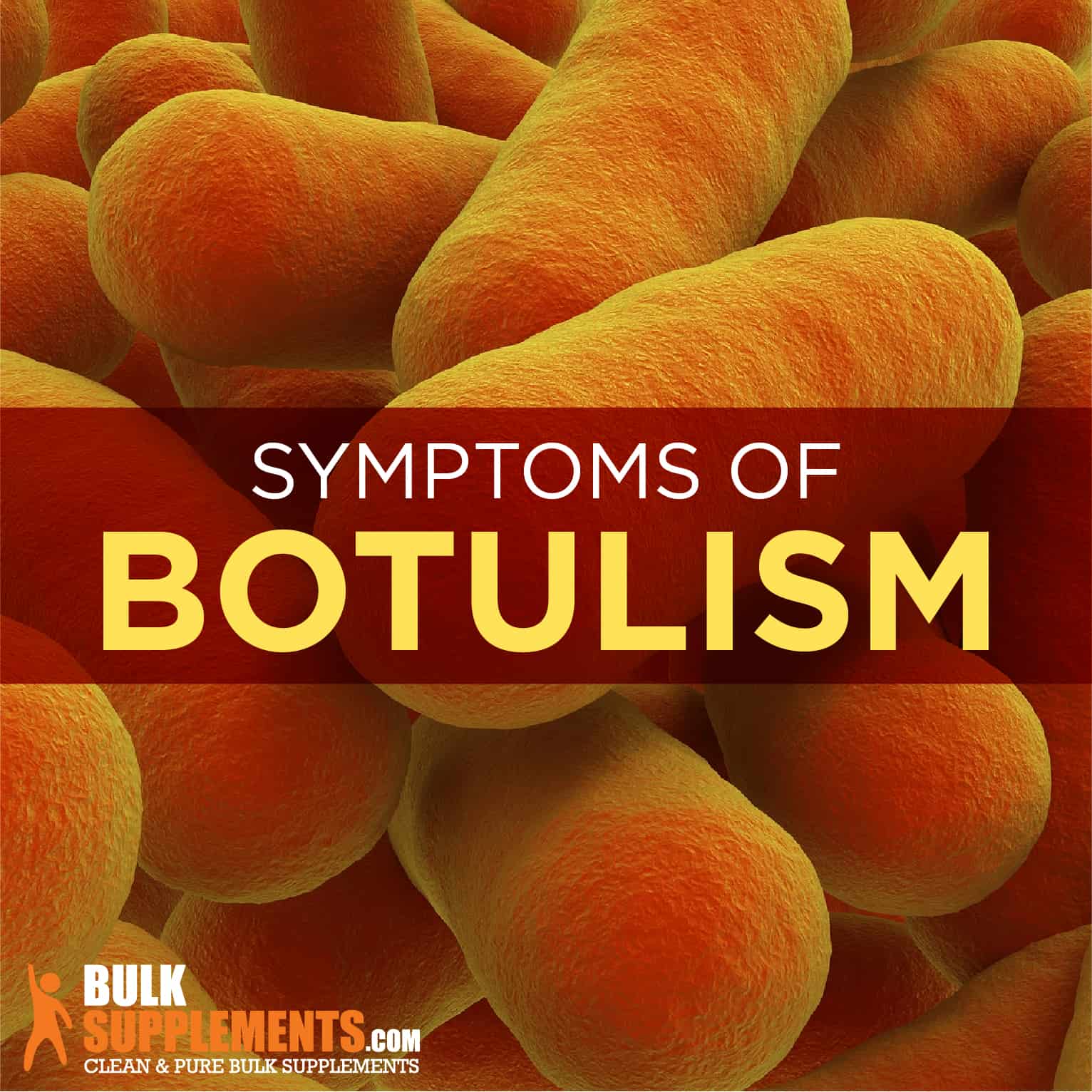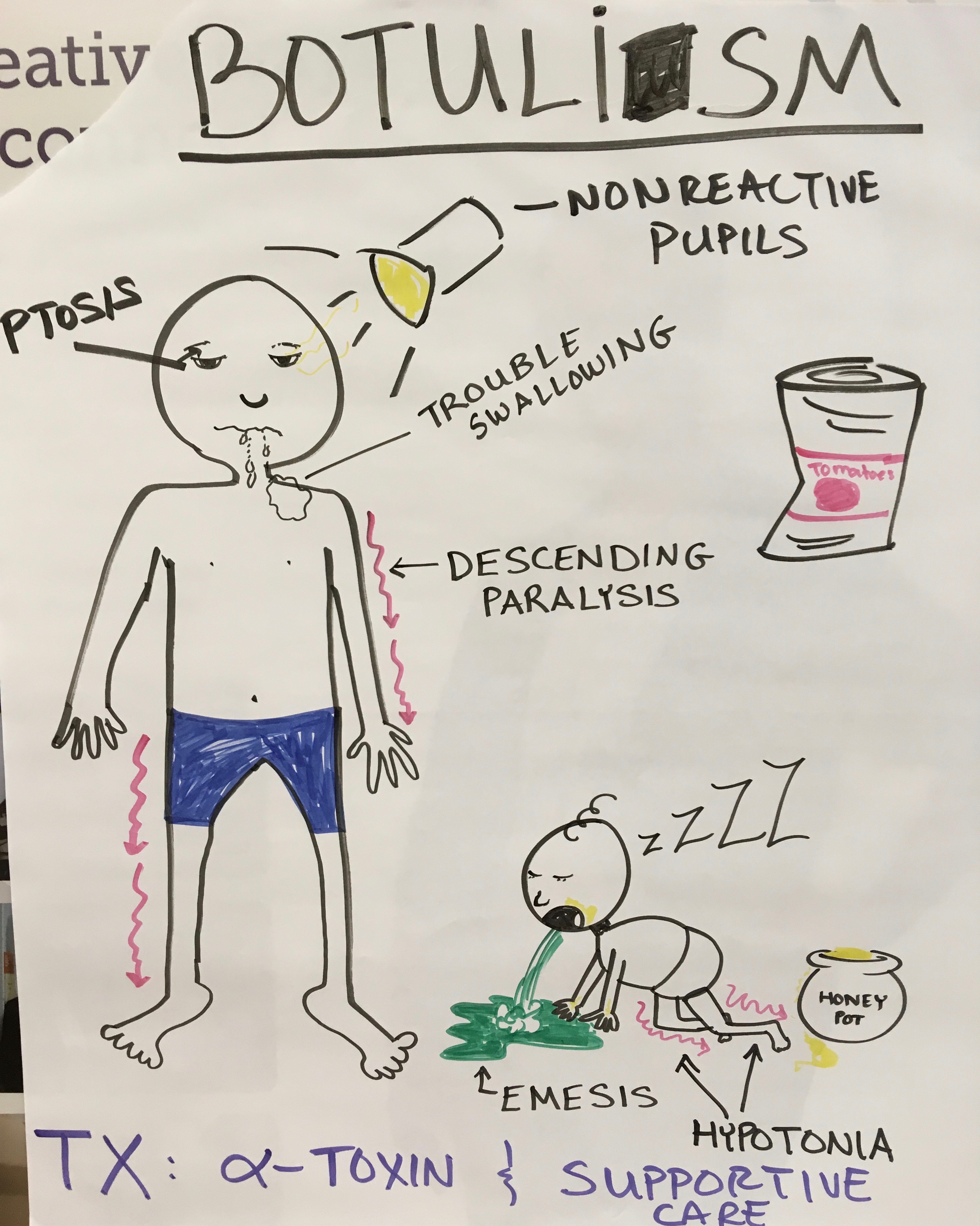Botulism Rash: Causes, Symptoms, And Treatment Options
Botulism rash is a rare but concerning condition often linked to the presence of botulinum toxin, a potent neurotoxin produced by the Clostridium botulinum bacteria. While botulism itself primarily affects the nervous system, the appearance of a rash can be an associated symptom in some individuals. Identifying and addressing botulism rash early is crucial to prevent complications and ensure a swift recovery. Understanding its causes, symptoms, and treatment options can empower individuals to take timely action.
Botulism, though rare, is a serious condition that can manifest in various forms, including foodborne, wound, and infant botulism. The connection between botulism and skin-related symptoms like a rash is not commonly discussed, making it even more essential to spread awareness. A botulism rash may be indicative of an immune response or an underlying infection, necessitating a thorough examination by healthcare professionals. With advancements in medical science, effective treatments are now available to manage both the rash and the root cause of botulism.
In this comprehensive guide, we will delve into the intricacies of botulism rash, exploring its potential triggers, symptoms, and associated conditions. From prevention strategies to treatment options, this article provides a detailed roadmap to better understand and manage this uncommon phenomenon. Whether you're a healthcare professional, a caregiver, or someone keen on learning about this topic, this article will serve as a valuable resource.
Read also:Amtrak Train Status Your Complete Guide To Realtime Updates
Table of Contents
- What is Botulism?
- Can Botulism Cause a Rash?
- Causes of Botulism Rash
- Symptoms of Botulism Rash
- How to Identify a Botulism Rash?
- Diagnosis of Botulism Rash
- Is Botulism Rash Contagious?
- Complications of Botulism Rash
- Treatment Options for Botulism Rash
- Prevention Strategies
- Can Botulism Rash Be Mistaken for Other Conditions?
- When to See a Doctor?
- Botulism Rash in Infants
- Botulism Rash and Dietary Habits
- FAQs
- Conclusion
What is Botulism?
Botulism is a rare but serious condition caused by the bacterium Clostridium botulinum. This bacterium produces a neurotoxin that interferes with nerve signaling, potentially leading to paralysis. Botulism can manifest in various forms, including foodborne botulism, wound botulism, infant botulism, and iatrogenic botulism (caused by medical interventions involving botulinum toxin).
Foodborne botulism often stems from improperly canned or preserved foods, while wound botulism occurs when the bacteria infect an open wound. Infant botulism, typically seen in babies under one year old, arises from ingesting spores that colonize in the intestines. Regardless of the type, early detection and treatment are critical to preventing severe complications.
In the context of botulism rash, this condition is not a direct hallmark of botulism but can occur as a secondary symptom or immune response. Understanding the broader scope of botulism is essential to grasp how skin manifestations like rashes fit into the overall clinical picture.
Can Botulism Cause a Rash?
What makes botulism rash unique?
Unlike other conditions that prominently feature skin symptoms, botulism itself does not typically cause a rash. However, in rare cases, individuals may develop a rash as a secondary symptom. This could be due to an immune reaction, an allergic response to treatment, or a coexisting infection.
A botulism rash might appear as red, itchy patches or localized inflammation. It is vital to differentiate this rash from other dermatological conditions, as misdiagnosis can delay appropriate treatment. Always consult a healthcare provider for accurate identification.
How common is botulism rash?
Botulism rash is exceedingly rare. Most documented cases of botulism focus on neurological and muscular symptoms, such as difficulty swallowing, blurred vision, and muscle weakness. However, the occasional appearance of a rash underscores the need for comprehensive patient evaluation to rule out other possible causes or complications.
Read also:Remy Lacroix Iconic Star In The Adult Film Industry
Causes of Botulism Rash
The causes of botulism rash can be multifaceted, often linked to underlying factors rather than the botulinum toxin itself. Some potential causes include:
- Immune Response: The body’s immune system may react to the presence of botulinum toxin, leading to skin inflammation and rash.
- Allergic Reaction: Treatment methods, such as antitoxins or antibiotics, may trigger an allergic skin reaction in sensitive individuals.
- Secondary Infection: In cases of wound botulism, an infected wound might result in localized redness, swelling, or rash.
- Underlying Health Conditions: Pre-existing skin conditions like eczema or psoriasis may worsen during a botulism infection, causing a noticeable rash.
Identifying the root cause is essential for effective treatment and management of the rash.
Symptoms of Botulism Rash
Botulism rash symptoms can vary based on the underlying cause. Common symptoms include:
- Red or inflamed patches on the skin
- Itching or burning sensation
- Localized swelling or tenderness
- In severe cases, blistering or skin peeling
These symptoms may occur alongside classic signs of botulism, such as muscle weakness, difficulty breathing, and drooping eyelids. Recognizing the combination of symptoms is vital for prompt medical intervention.
How to Identify a Botulism Rash?
Are there specific markers for botulism rash?
While there are no definitive markers exclusive to botulism rash, certain characteristics can provide clues. A rash that develops in conjunction with botulism symptoms, such as difficulty swallowing or muscle paralysis, warrants further investigation. The rash may also appear near the site of an infected wound in cases of wound botulism.
What diagnostic tools are used?
Dermatological examination, patient history, and laboratory tests can aid in diagnosing a botulism rash. Tests may include:
- Blood tests to detect the botulinum toxin
- Skin biopsies to rule out other conditions
- Wound cultures in cases of wound botulism
Accurate diagnosis ensures appropriate treatment and prevents further complications.
Diagnosis of Botulism Rash
Diagnosing a botulism rash involves a multi-step approach:
- Clinical Assessment: A healthcare provider will evaluate the patient’s symptoms and medical history.
- Laboratory Testing: Blood and stool samples may be analyzed for the presence of botulinum toxin or bacterial spores.
- Skin Examination: The rash will be examined for signs of allergic reaction, infection, or inflammation.
Early diagnosis is critical for effective management and treatment.
Is Botulism Rash Contagious?
Botulism rash itself is not contagious, as it is typically a secondary symptom rather than a primary infectious condition. However, botulism caused by Clostridium botulinum bacteria can pose a risk if proper hygiene and safety precautions are not followed. For instance, contaminated food or improperly treated wounds can spread the bacteria under certain conditions.
Complications of Botulism Rash
Complications from a botulism rash are rare but can occur if left untreated, especially if the rash is symptomatic of a more severe underlying condition. Potential complications include:
- Skin infections from scratching or irritation
- Delayed healing of wounds in cases of wound botulism
- Severe allergic reactions requiring medical intervention
Prompt treatment can minimize these risks and improve outcomes.
Treatment Options for Botulism Rash
Managing a botulism rash involves addressing both the rash itself and its underlying cause. Common treatment approaches include:
- Topical Creams: Antihistamines or corticosteroid creams can reduce inflammation and itching.
- Antibiotics: For secondary infections, antibiotics may be prescribed.
- Antitoxin Therapy: In cases of botulism, antitoxins can neutralize the botulinum toxin.
- Supportive Care: Hydration, wound care, and monitoring for complications are essential.
Consulting a healthcare provider ensures the most effective treatment plan tailored to individual needs.
Prevention Strategies
Preventing botulism and associated rashes involves several proactive measures:
- Properly can and preserve foods to prevent foodborne botulism.
- Seek immediate care for open wounds to avoid wound botulism.
- Avoid giving honey to infants under one year old to prevent infant botulism.
- Adhere to hygiene and safety protocols when handling food or wounds.
Education and awareness are key to reducing the risk of botulism and its complications.
Can Botulism Rash Be Mistaken for Other Conditions?
Yes, a botulism rash can be misdiagnosed as other dermatological conditions, such as:
- Allergic reactions
- Contact dermatitis
- Autoimmune disorders like lupus
- Fungal or bacterial infections
Accurate diagnosis requires a thorough evaluation by a healthcare provider to distinguish between these conditions.
When to See a Doctor?
Seek immediate medical attention if you experience symptoms of botulism, such as:
- Difficulty breathing or swallowing
- Muscle weakness or paralysis
- Persistent or worsening rash
Early intervention can prevent severe complications and improve recovery outcomes.
Botulism Rash in Infants
Infant botulism is a rare condition that can occur when babies ingest Clostridium botulinum spores. While a rash is not a common symptom, it may develop as a secondary issue. Symptoms of infant botulism include constipation, weak cry, and difficulty feeding. Parents should remain vigilant and seek immediate medical care if these symptoms arise.
Botulism Rash and Dietary Habits
Dietary habits play a significant role in preventing botulism. Consuming improperly canned or preserved foods increases the risk of foodborne botulism. Maintaining a balanced diet with fresh, properly prepared foods can minimize this risk. For infants, avoiding honey and other high-risk foods is critical to their safety and well-being.
FAQs
1. What does a botulism rash look like?
It may appear as red, inflamed patches, often accompanied by itching or swelling. The exact appearance can vary based on the underlying cause.
2. Can botulism rash be treated at home?
While mild cases may benefit from over-the-counter creams, consulting a healthcare provider is essential to address the root cause effectively.
3. Is botulism rash life-threatening?
The rash itself is not life-threatening, but it may indicate a severe underlying condition requiring medical attention.
4. How is botulism diagnosed?
Diagnosis involves clinical assessment, lab tests for botulinum toxin, and examination of symptoms, including any associated rash.
5. Can botulism rash spread to other parts of the body?
If caused by an underlying infection, the rash may spread locally. Proper treatment can prevent further spread.
6. Are there vaccines available for botulism?
Currently, there is no commercially available vaccine for botulism. Prevention relies on proper food handling and hygiene practices.
Conclusion
Botulism rash, though rare, is a condition that requires timely medical attention. Understanding its causes, symptoms, and treatment options can empower individuals to take proactive measures for their health. By adhering to prevention strategies and seeking professional care when needed, the risks associated with botulism and its complications can be significantly reduced. Stay informed, stay safe, and prioritize your health.
Article Recommendations

